-
 Bitcoin
Bitcoin $84,258.9872
0.35% -
 Ethereum
Ethereum $1,590.5943
1.14% -
 Tether USDt
Tether USDt $0.9998
-0.02% -
 XRP
XRP $2.0990
1.26% -
 BNB
BNB $587.2456
1.30% -
 Solana
Solana $132.5296
6.11% -
 USDC
USDC $0.9999
0.00% -
 TRON
TRON $0.2483
-2.37% -
 Dogecoin
Dogecoin $0.1557
1.96% -
 Cardano
Cardano $0.6199
2.68% -
 UNUS SED LEO
UNUS SED LEO $9.1185
-2.93% -
 Chainlink
Chainlink $12.4572
2.80% -
 Avalanche
Avalanche $19.2046
1.97% -
 Toncoin
Toncoin $2.9568
3.52% -
 Stellar
Stellar $0.2397
2.14% -
 Shiba Inu
Shiba Inu $0.0...01181
1.81% -
 Sui
Sui $2.0961
0.90% -
 Hedera
Hedera $0.1602
2.15% -
 Bitcoin Cash
Bitcoin Cash $330.4313
4.06% -
 Polkadot
Polkadot $3.6278
3.32% -
 Litecoin
Litecoin $74.9638
1.65% -
 Hyperliquid
Hyperliquid $16.4916
8.27% -
 Dai
Dai $0.9999
-0.01% -
 Bitget Token
Bitget Token $4.3499
0.87% -
 Ethena USDe
Ethena USDe $0.9990
-0.03% -
 Pi
Pi $0.6068
-1.04% -
 Monero
Monero $216.4766
0.12% -
 Uniswap
Uniswap $5.1795
0.94% -
 Pepe
Pepe $0.0...07203
1.55% -
 OKB
OKB $50.4898
-2.39%
What does blockchain mean and how does it apply to the art and collectibles market?
Blockchain enhances art market transparency by recording artwork transactions on an immutable ledger, ensuring verifiable provenance and ownership history.
Apr 08, 2025 at 10:01 am
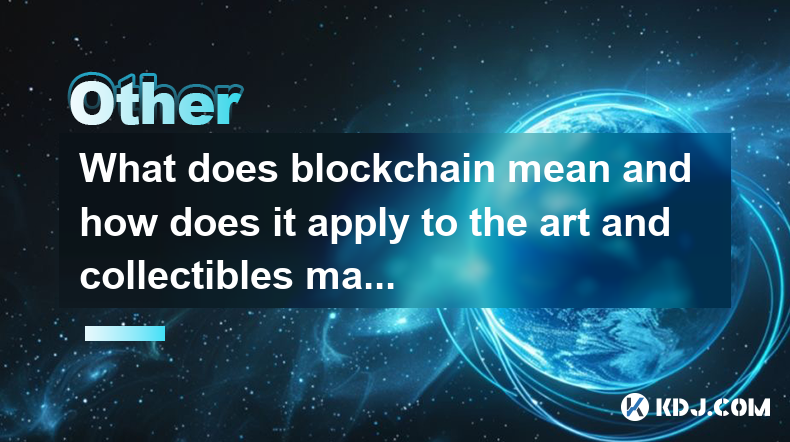
Blockchain technology is a decentralized, distributed ledger that records transactions across numerous computers. This ensures that the recorded data cannot be altered retroactively without the alteration of all subsequent blocks and the consensus of the network. In the context of cryptocurrencies like Bitcoin and Ethereum, blockchain serves as the underlying technology that enables secure, transparent, and tamper-proof transactions. The technology's inherent characteristics make it an ideal solution for various applications beyond finance, including the art and collectibles market.
In the art and collectibles market, blockchain technology offers several transformative benefits. It provides a secure and transparent way to track the provenance and ownership of artworks and collectibles. This is crucial in an industry where authenticity and ownership history are paramount. By using blockchain, artists, collectors, and galleries can create a verifiable record of an artwork's journey from creation to current ownership. This not only helps in preventing fraud but also adds value to the artwork by ensuring its authenticity and history are indisputable.
How Blockchain Enhances Transparency in the Art Market
Blockchain enhances transparency in the art market by creating an immutable ledger of transactions. Each transaction related to an artwork, such as its creation, sale, or transfer of ownership, is recorded on the blockchain. This means that anyone with access to the blockchain can view the complete history of an artwork. This level of transparency is unprecedented in the traditional art market, where provenance can often be murky and difficult to verify. By providing a clear and verifiable record, blockchain helps to build trust among buyers, sellers, and other stakeholders in the art ecosystem.
Moreover, blockchain technology can facilitate the use of smart contracts in the art market. Smart contracts are self-executing contracts with the terms directly written into code. They automatically enforce the rules and execute the agreed-upon actions when certain conditions are met. In the art market, smart contracts can be used to automate royalty payments to artists whenever their work is resold. This ensures that artists continue to benefit from the increasing value of their work over time, which is often not the case in traditional art sales.
Blockchain and Digital Art: NFTs
One of the most significant applications of blockchain in the art market is the rise of Non-Fungible Tokens (NFTs). NFTs are unique digital assets that represent ownership of a specific item or piece of content, often digital art. Each NFT is stored on a blockchain, ensuring its uniqueness and authenticity. The use of NFTs has revolutionized the digital art market by allowing artists to tokenize their work and sell it directly to collectors without the need for intermediaries.
The process of creating and selling an NFT involves several steps:
- Creating the Artwork: The artist creates a digital piece of art.
- Minting the NFT: The artwork is then minted as an NFT on a blockchain platform, such as Ethereum.
- Listing the NFT: The NFT is listed for sale on an NFT marketplace, where potential buyers can view and purchase it.
- Transferring Ownership: Once sold, the ownership of the NFT is transferred to the buyer, and the transaction is recorded on the blockchain.
This process not only ensures the authenticity and ownership of the digital artwork but also allows artists to reach a global audience and monetize their work in new ways.
Benefits of Blockchain for Artists and Collectors
For artists, blockchain technology offers several advantages. It provides a platform for them to showcase and sell their work directly to a global audience, bypassing traditional galleries and intermediaries. This can lead to higher profits for artists, as they do not have to pay hefty commissions. Additionally, the use of smart contracts ensures that artists receive royalties from secondary sales, which can provide a steady income stream.
For collectors, blockchain technology offers increased security and transparency. They can be confident in the authenticity and provenance of the artworks they purchase, as all transactions are recorded on the blockchain. This reduces the risk of fraud and increases the value of their collections. Furthermore, the ability to track the history of an artwork can enhance its cultural and historical significance, making it more valuable to collectors and institutions.
Challenges and Considerations
Despite its many benefits, the integration of blockchain technology into the art and collectibles market is not without challenges. One of the main concerns is the environmental impact of blockchain, particularly those that use proof-of-work consensus mechanisms like Bitcoin. The energy consumption associated with these networks has raised questions about their sustainability.
Another challenge is the need for widespread adoption and understanding of blockchain technology within the art community. Many artists, collectors, and galleries may be hesitant to embrace this new technology due to a lack of familiarity or concerns about its complexity. Education and awareness campaigns are essential to overcome these barriers and encourage more stakeholders to adopt blockchain solutions.
Additionally, regulatory uncertainty surrounding blockchain and cryptocurrencies can pose challenges for the art market. Governments around the world are still grappling with how to regulate these technologies, and this uncertainty can impact the willingness of artists and collectors to engage with blockchain-based solutions.
Real-World Examples of Blockchain in the Art Market
Several real-world examples illustrate the potential of blockchain in the art and collectibles market. One notable example is the platform Artory, which uses blockchain to create a registry of artworks and their provenance. Artory partners with auction houses, galleries, and other art institutions to record transactions and ownership history on the blockchain, providing a transparent and verifiable record for collectors and researchers.
Another example is Mona, a platform that allows artists to create and sell NFTs of their digital art. Mona has facilitated the sale of numerous high-profile NFTs, demonstrating the potential for blockchain to revolutionize the digital art market. The platform's use of smart contracts ensures that artists receive royalties from secondary sales, providing them with a new revenue stream.
Verisart is another company leveraging blockchain to authenticate and track the provenance of artworks. By issuing digital certificates of authenticity on the blockchain, Verisart helps artists and collectors to verify the authenticity and ownership history of artworks, reducing the risk of fraud and increasing trust in the market.
Future Prospects of Blockchain in the Art Market
The future of blockchain in the art and collectibles market looks promising. As more artists, collectors, and institutions become aware of the benefits of blockchain technology, its adoption is likely to increase. The use of NFTs and smart contracts is expected to grow, providing new opportunities for artists to monetize their work and for collectors to invest in unique digital assets.
Moreover, the integration of blockchain with other emerging technologies, such as augmented reality (AR) and virtual reality (VR), could further enhance the art market. For example, AR and VR could be used to create immersive experiences for digital art, while blockchain ensures the authenticity and ownership of these experiences.
As the technology continues to evolve, it is likely that new applications and use cases will emerge, further transforming the art and collectibles market. The key to realizing the full potential of blockchain in this sector will be continued innovation, education, and collaboration among all stakeholders.
Common Questions and Answers:
Q: What is blockchain technology?
A: Blockchain technology is a decentralized, distributed ledger that records transactions across numerous computers. It ensures that the recorded data cannot be altered retroactively without the alteration of all subsequent blocks and the consensus of the network. In the context of cryptocurrencies, blockchain serves as the underlying technology that enables secure, transparent, and tamper-proof transactions.
Q: How does blockchain apply to the art and collectibles market?
A: Blockchain technology applies to the art and collectibles market by providing a secure and transparent way to track the provenance and ownership of artworks and collectibles. It enhances transparency, facilitates the use of smart contracts for royalty payments, and enables the creation and sale of NFTs, revolutionizing the digital art market.
Q: What are NFTs and how do they relate to blockchain?
A: NFTs, or Non-Fungible Tokens, are unique digital assets that represent ownership of a specific item or piece of content, often digital art. Each NFT is stored on a blockchain, ensuring its uniqueness and authenticity. NFTs have revolutionized the digital art market by allowing artists to tokenize their work and sell it directly to collectors.
Q: What are the benefits of blockchain for artists?
A: For artists, blockchain technology offers the ability to showcase and sell their work directly to a global audience, bypassing traditional galleries and intermediaries. It also ensures that artists receive royalties from secondary sales through the use of smart contracts, providing a steady income stream.
Q: What are the benefits of blockchain for collectors?
A: For collectors, blockchain technology provides increased security and transparency. They can be confident in the authenticity and provenance of the artworks they purchase, as all transactions are recorded on the blockchain. This reduces the risk of fraud and increases the value of their collections.
Q: What are the challenges of using blockchain in the art market?
A: The challenges of using blockchain in the art market include the environmental impact of certain blockchain networks, the need for widespread adoption and understanding of the technology, and regulatory uncertainty surrounding blockchain and cryptocurrencies.
Q: Can you provide examples of blockchain being used in the art market?
A: Examples of blockchain being used in the art market include platforms like Artory, which creates a registry of artworks and their provenance on the blockchain, Mona, which allows artists to create and sell NFTs of their digital art, and Verisart, which issues digital certificates of authenticity on the blockchain to verify the authenticity and ownership history of artworks.
Disclaimer:info@kdj.com
The information provided is not trading advice. kdj.com does not assume any responsibility for any investments made based on the information provided in this article. Cryptocurrencies are highly volatile and it is highly recommended that you invest with caution after thorough research!
If you believe that the content used on this website infringes your copyright, please contact us immediately (info@kdj.com) and we will delete it promptly.
- Kaspa (KAS) Price Prediction Hints at Accumulation Before Potential Surge
- 2025-04-17 22:15:13
- FET Price Prediction: Artificial Superintelligence Alliance (FET) Cryptocurrency Rebounds 10%
- 2025-04-17 22:15:13
- U.S. President Donald Trump Slammed Fed Chair Jerome Powell
- 2025-04-17 22:15:12
- Running a laundromat can't be as "easy" as potential investors may believe it is
- 2025-04-17 22:15:12
- BlockDAG (BDAG) Presale Explosion and Mobile Mining Powerhouse
- 2025-04-17 22:05:12
- Solana (SOL) Price Prediction: Eyes on $180 as Structure Turns Bullish
- 2025-04-17 22:05:12
Related knowledge
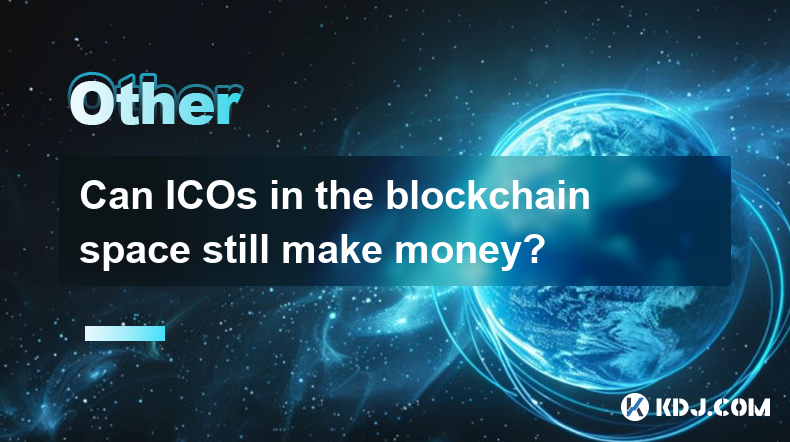
Can ICOs in the blockchain space still make money?
Apr 17,2025 at 08:29pm
The landscape of Initial Coin Offerings (ICOs) in the blockchain space has evolved significantly since their peak in 2017 and 2018. Despite the increased regulatory scrutiny and the rise of alternative fundraising methods like Security Token Offerings (STOs) and Initial Exchange Offerings (IEOs), ICOs can still be a viable way to raise funds and generat...

Can the application of blockchain in supply chain finance bring benefits?
Apr 15,2025 at 04:00pm
Can the application of blockchain in supply chain finance bring benefits? The integration of blockchain technology into supply chain finance has garnered significant attention in the cryptocurrency and financial sectors. This article explores how blockchain can potentially revolutionize supply chain finance, detailing its benefits and providing a compre...
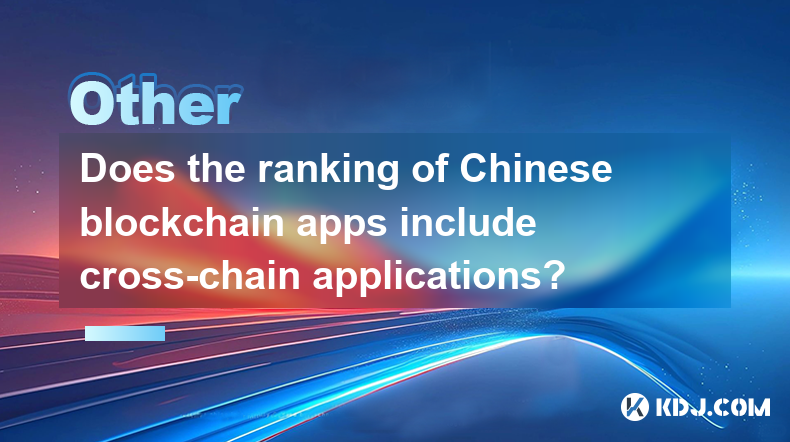
Does the ranking of Chinese blockchain apps include cross-chain applications?
Apr 14,2025 at 04:00pm
The ranking of Chinese blockchain apps is a comprehensive evaluation that takes into account various aspects such as user base, transaction volume, and technological innovation. A pertinent question arises regarding whether these rankings include cross-chain applications. Cross-chain applications, which allow different blockchain networks to interact an...
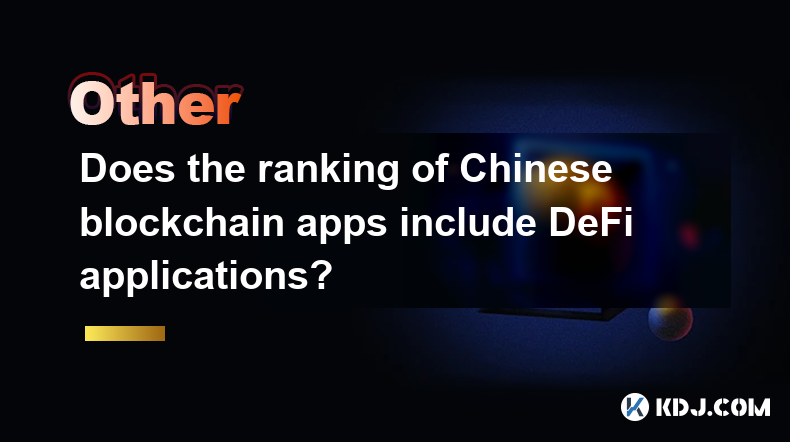
Does the ranking of Chinese blockchain apps include DeFi applications?
Apr 15,2025 at 06:57am
The ranking of Chinese blockchain apps is a comprehensive list that showcases the most popular and influential applications within the cryptocurrency ecosystem. One question that often arises is whether these rankings include DeFi applications. To answer this, we need to delve into the specifics of how these rankings are compiled and what types of appli...
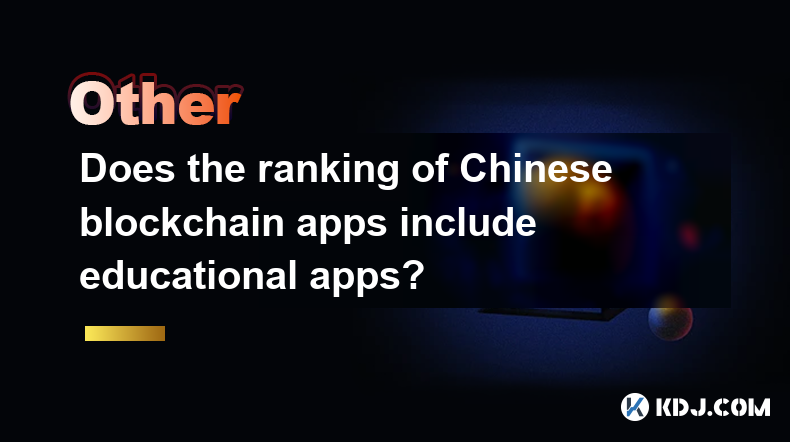
Does the ranking of Chinese blockchain apps include educational apps?
Apr 16,2025 at 03:35am
The ranking of Chinese blockchain apps often includes a variety of categories, from finance and gaming to social networking and beyond. One question that frequently arises is whether these rankings include educational apps. To address this, we need to delve into the specifics of how blockchain apps are categorized and ranked in China, and whether educat...
Does the ranking of Chinese blockchain apps include enterprise-level applications?
Apr 15,2025 at 06:42am
The ranking of Chinese blockchain apps often includes a variety of applications, ranging from consumer-focused to enterprise-level solutions. Understanding the scope and criteria for these rankings is essential to determine if enterprise-level applications are included. This article delves into the specifics of how Chinese blockchain app rankings are co...

Can ICOs in the blockchain space still make money?
Apr 17,2025 at 08:29pm
The landscape of Initial Coin Offerings (ICOs) in the blockchain space has evolved significantly since their peak in 2017 and 2018. Despite the increased regulatory scrutiny and the rise of alternative fundraising methods like Security Token Offerings (STOs) and Initial Exchange Offerings (IEOs), ICOs can still be a viable way to raise funds and generat...

Can the application of blockchain in supply chain finance bring benefits?
Apr 15,2025 at 04:00pm
Can the application of blockchain in supply chain finance bring benefits? The integration of blockchain technology into supply chain finance has garnered significant attention in the cryptocurrency and financial sectors. This article explores how blockchain can potentially revolutionize supply chain finance, detailing its benefits and providing a compre...

Does the ranking of Chinese blockchain apps include cross-chain applications?
Apr 14,2025 at 04:00pm
The ranking of Chinese blockchain apps is a comprehensive evaluation that takes into account various aspects such as user base, transaction volume, and technological innovation. A pertinent question arises regarding whether these rankings include cross-chain applications. Cross-chain applications, which allow different blockchain networks to interact an...

Does the ranking of Chinese blockchain apps include DeFi applications?
Apr 15,2025 at 06:57am
The ranking of Chinese blockchain apps is a comprehensive list that showcases the most popular and influential applications within the cryptocurrency ecosystem. One question that often arises is whether these rankings include DeFi applications. To answer this, we need to delve into the specifics of how these rankings are compiled and what types of appli...

Does the ranking of Chinese blockchain apps include educational apps?
Apr 16,2025 at 03:35am
The ranking of Chinese blockchain apps often includes a variety of categories, from finance and gaming to social networking and beyond. One question that frequently arises is whether these rankings include educational apps. To address this, we need to delve into the specifics of how blockchain apps are categorized and ranked in China, and whether educat...

Does the ranking of Chinese blockchain apps include enterprise-level applications?
Apr 15,2025 at 06:42am
The ranking of Chinese blockchain apps often includes a variety of applications, ranging from consumer-focused to enterprise-level solutions. Understanding the scope and criteria for these rankings is essential to determine if enterprise-level applications are included. This article delves into the specifics of how Chinese blockchain app rankings are co...
See all articles























































































